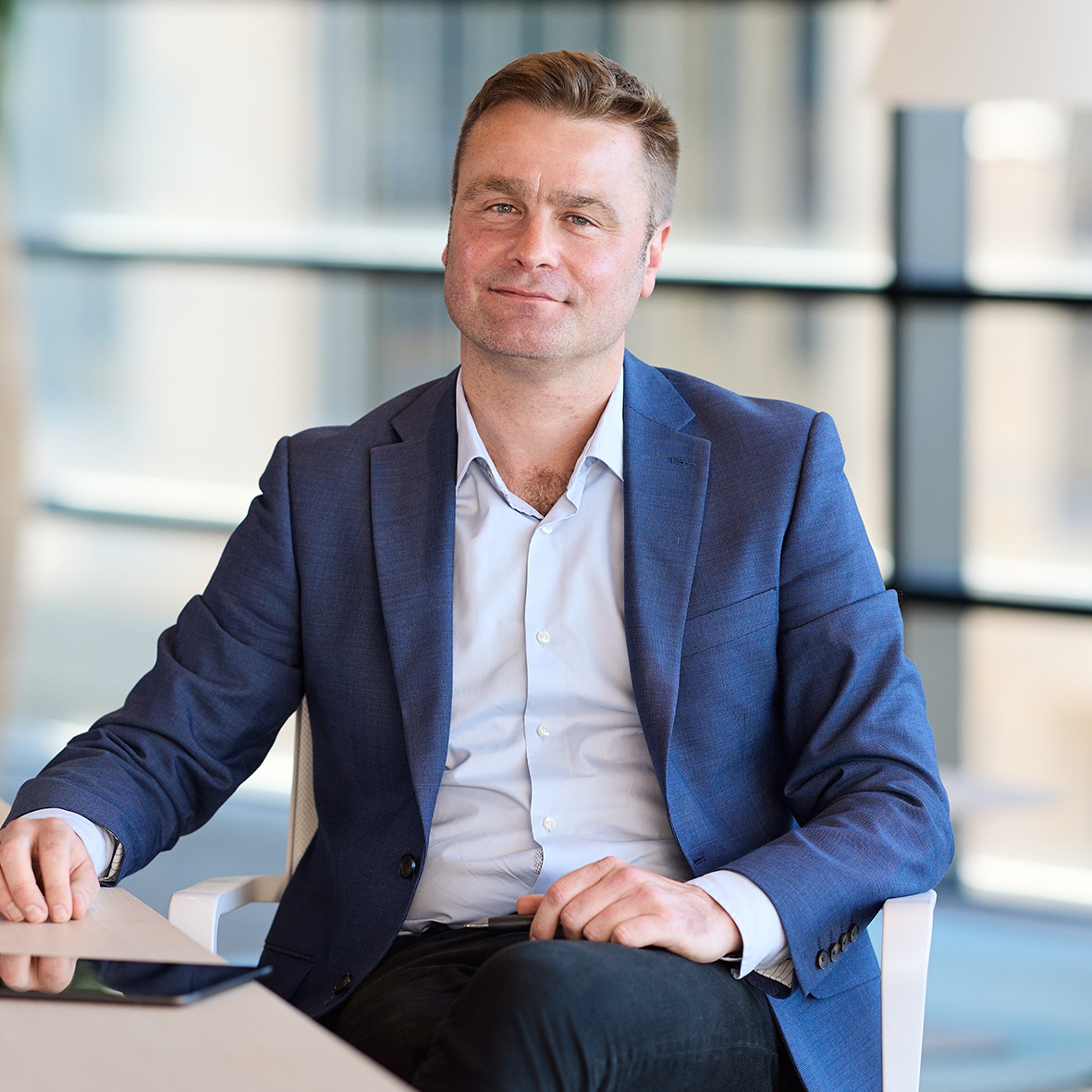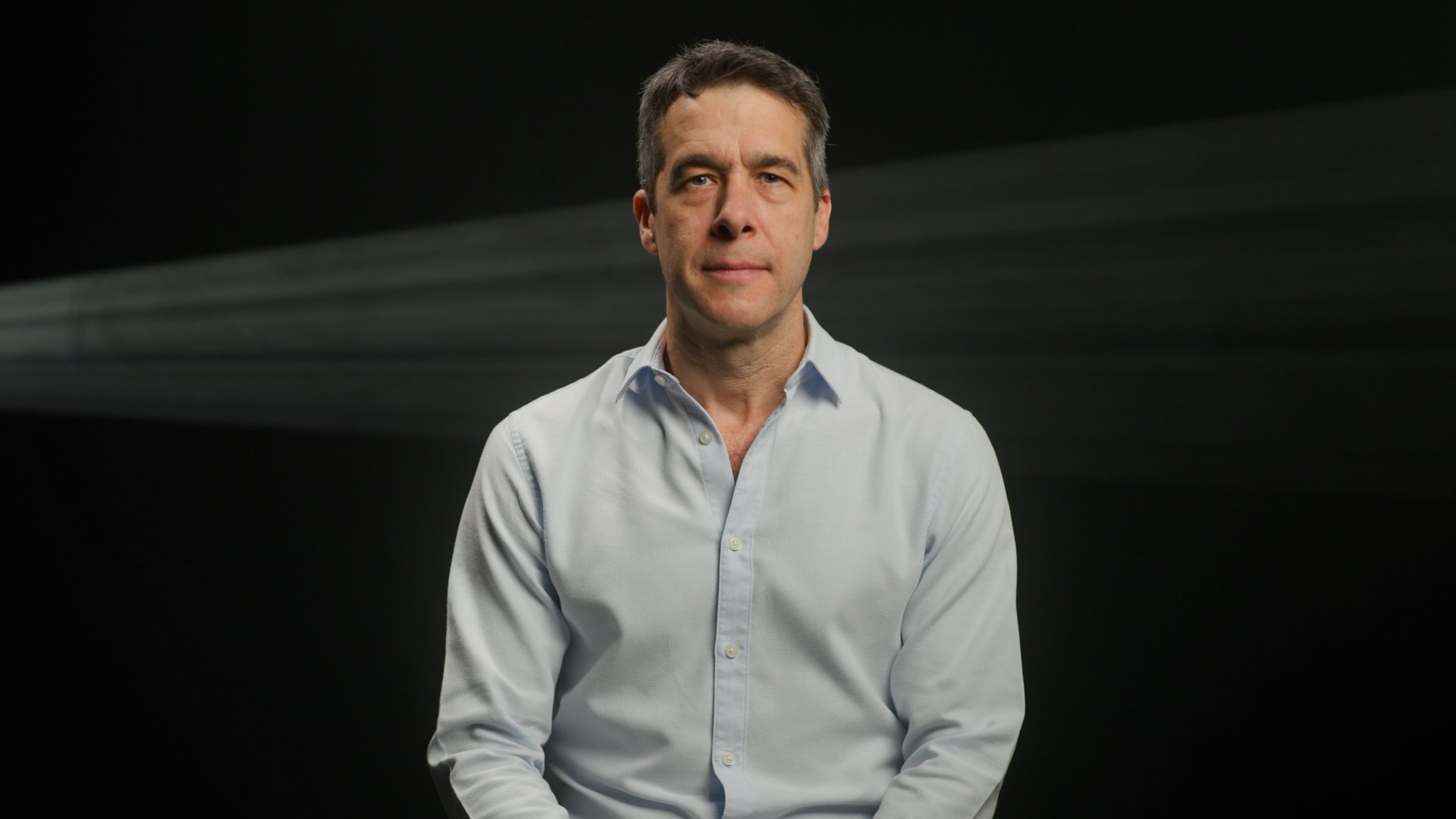
The value of an investment, and any income from it, can fall as well as rise and investors may not get back the amount invested.
It is easy to be aware of all the bad things happening in the world. It’s harder to know about the good things: billions of improvements that are never reported. Don’t misunderstand me, I’m not talking about some trivial positive news to supposedly balance out the negative. I’m talking about the fundamental improvements that are world-changing but are too slow, too fragmented or too small one-by-one to ever qualify as news. I’m talking about the secret silent miracle of human progress.
Clients will be aware of our long-standing admiration for the work of Dr Hans Rosling. The human mind is instinctively drawn to the dramatic and the horrifying, and our tendency to notice the bad more than the good gives us an impression of a world that is more frightening, violent and hopeless than it really is. Factfulness, the book that Dr Rosling devoted the last years of his life to writing, works as a brilliant antidote to this negativity, revealing a world that is slowly but surely getting better. As Dr Rosling points out: extreme poverty has virtually been eliminated in recent decades; the gap between the developed and developing worlds has narrowed; and access to everything from clean water and electricity to education, healthcare and guitars has been transformed.1
Dr Rosling did not consider himself an optimist. He resented the label, thinking it made him sound naïve, as if he were simply replacing one misleading bias with another. Rather, Dr Rosling considered himself a very serious ‘possibilist’: someone whose belief in the possibility of further progress was based upon a clear, reasonable and fact-based assessment of all that has already been achieved. The possibilist mindset does not prevent us from acknowledging all that is bad in the world. Sometimes, terrible things happen. The possibilist mindset simply seeks to put them in their correct context: the long-established historic trend towards peace, prosperity and solutions.
We are not wide-eyed optimists, nor perma-bulls for the asset class. In nearly three decades of managing dedicated emerging market (EM) mandates, we have seen enough unexpected crises and shocks to understand that the future is uncertain. This creates anxiety, but it also creates opportunities. As investors our preference is always to embrace uncertainty rather than be paralysed by it. We will make mistakes, and we will learn from them. But we will not stop backing our judgement where we feel we might have a differentiated view. Over the long term, history suggests our mistakes will pale into insignificance against the ones that we get right.
Emerging market investors have been battered by a decade of lacklustre growth and uninspiring absolute returns. Now, as the trauma of Covid segues into the tragedy of war, we understand the temptation to fall back on linear extrapolation. But we think this would be a mistake: our contention is that there is a lot for global emerging markets (GEM) investors to be excited about. This is not about blind optimism or hope without reason. It is simply about having a clear and constructive view of what is possible.
This time is different
We can begin by addressing the market’s current obsession with rising inflation and interest rates, and the perception that this must be a disastrous thing for EM. It’s a seductive theory; after all, developing economies are notorious for their historic reliance on the kindness of strangers, and every EM crisis in the last 40 years has been associated with a rising federal funds rate, a dramatic tightening of liquidity, and massive capital outflows. On the other hand, there have been just as many occasions – the early 1970s, or the early 2000s, for example – when rising US interest rates caused barely a ripple in EM. We need to look at fundamentals, not blindly regurgitate market dictums.
The difference now is not just that macroeconomic resilience in EM has been transformed since the tumultuous years of the 1980s and 1990s, or even relative to the so-called ‘taper tantrum’ of the mid-2010s. The key difference now is positioning. Just look at capital flows into EM as a percentage of gross domestic product (GDP): massive inflows from the early 2000s were only briefly interrupted by the financial crisis in 2008, but then reversed dramatically in 2013, and have remained in negative territory ever since. Yes, they moderated in response to the central bank easing that accompanied the pandemic shock in 2020, but they never quite made it back into positive territory. We’ve been pariahs for the best part of a decade.

Source: EM advisors.
So, there’s not much to see here, and certainly no looming disaster. Fine, but what about growth? Even if the west manages not to tip into recession, everyone knows that the golden age of globalisation is at an end, set to be replaced by a more fractious and balkanised era of localised production and shortening supply chains. The verdict of many commentators is that Emerging Markets – as the biggest prior beneficiaries of globalisation – will be those most challenged by its reversal.
This is a dangerous oversimplification, not to mention inconsistent with the arc of human progress. Convergence theory has always emphasised the role of crisis as a catalyst for change, and the potential for new models to emerge – what Moses Abramovitz, drawing upon Mancur Olson’s The Rise and Decline of Nations, referred to in 1986 as “radical ground-clearing experiences that open the way for new men, new organisations and new modes of operation, better fitted to technological potential”. Supply chains will continue to evolve – as they have for many years – but there are still likely to be plenty of winners in our universe even from a reshuffling based on geographic and perhaps also political contiguity. Meanwhile, the largest economies will continue to look inward for growth. Self-sufficiency, billion-plus home markets, and growing evidence that homegrown companies can capture demand previously exploited by multi-nationals listed elsewhere will continue to provide stock-pickers with long-duration growth opportunities.
We don’t wish to trivialise this debate: geopolitical shifts can be unsettling, and as we have seen this year, the costs of miscalculation can be horrific. The possibility that authoritarian governments will be increasingly spurned by western investors is one we need to take seriously, and the distinction between companies doing good things in regimes whose values are misaligned with our own is one that may be stripped of its nuance. As the decision to freeze Russian central bank reserves shows, we may be living in a multipolar world, but it remains – for now – one with a single financial system at the centre. Perhaps we will look back on this as the beginning of the end of the post-Bretton Woods era. Or perhaps, as Dr Rosling liked to remind us, those of us in North America and Europe need to understand – however much our nostalgic minds struggle with the concept – that we are becoming the 20 per cent, not the 80. Whatever the new world order might look like, however, the idea that it does not offer a sizeable and in many cases vastly expanded place for many of the countries and companies in which we invest is surely wrong.
Net zero: The New World order
The energy transition is an example of an area we are thinking hard about in this context. As clients know, we have been sympathetic to the arguments for upside surprises in the prices of several important commodities in recent years, and we have positioned our portfolios accordingly. This view has obviously become more consensual in recent months, with most analysis focusing on the near-term disruptions that are likely to result from a potential withdrawal of Russian and the Ukrainian supply from global markets. What interests us far more than this, however, is the likelihood of an acceleration in the energy security and renewable agenda.
If we are to stand a chance of meeting this agenda, we will need a lot of stuff. Wind turbines, solar arrays, energy storage, electric vehicles (EVs) and all of the associated infrastructure will not only require lots of steel and concrete, they will also require huge amounts of speciality metals and minerals such as lithium, copper, graphite, nickel, chromium and neodymium. And where are the largest, lowest-cost, most efficient and highest quality producers of this stuff? They are mostly in emerging markets.
This is well-known: most of us are probably bored of hearing that the typical EV requires six times the mineral inputs of a conventional car, or that an onshore wind plant requires nine times more than the gas-fired alternative.
But have the full implications of this been absorbed? Judging by the number of proposed mine projects that have been cancelled over the last year or two – partly in response to pressure from many of the same people who claim to be in favour of clean energy – perhaps not. For a bureaucratic organisation, the International Energy Agency’s (IEA) May 2021 report on the role of critical minerals in the energy transition contained an almost alarmist call-to-arms: “Today’s supply and investment plans for many critical minerals fall well short of what is needed to support an accelerated deployment of solar panels, wind turbines and electric vehicles.”2
The issue is not just the shortage of current supply and the length of lead times: moving to a world of secure energy will require a massive, front-end loaded shift in trade patterns, bringing new countries and geopolitical considerations into play. For some critical transition minerals, a single country accounts for over half of worldwide production – South Africa in platinum, China in rare earth elements – while even copper and nickel have over half of current production coming from just three countries. Some of these countries are better equipped to deal with the opportunities and challenges than others: commodity windfalls distort economies, and if poorly managed, the production of mineral resources gives rise to substantial environmental and social issues.

Source: IEA.
As with all commodities, higher prices will eventually trigger a market response and incentivise innovation, and static analysis of the type undertaken by the IEA will perhaps go the same way as most Malthusian prophecies. We are already seeing this – the silver and silicon requirements of the solar supply chain have come down by about half in the last decade, while EV battery manufacturers including CATL have made enormous strides to overcome the energy density issues around lower-nickel cathode chemistries such as lithium iron phosphate (LFP). But even as markets respond, governments and investors in rich world economies need to take their responsibilities seriously, and not just bury their heads in the sand or hide behind well-meaning but counter-productive divestment policies. The need for committed, long-term and thoughtful stewardship is greater than ever, and governance rules need to acknowledge the trade-offs before it’s too late. Just one of the many sad footnotes to the invasion of Ukraine is the likelihood that our clients’ holdings in Norilsk Nickel will pass into the hands of people who care very little about the potential we saw in the company to act as a leader in the fight against climate change.
To be clear, this is not a narrow call for EM investors to buy energy and commodities at the expense of technology. The energy transition may be as important an investment theme in the coming decades as Moore’s law has been in previous decades, but they will continue to feed off each other as chips and software are added to renewable supply chains or EV platforms, while robotics, quantum computing and other as-yet unimagined industries demand more power. What is striking is just how many of these beneficiaries are in emerging markets – from the commodity producers and infrastructure providers that will build the new age, to the semiconductor companies, energy solutions providers and platforms that will power it. A barbell of exposure to these areas – a feature of our portfolios over the last five years or so – feels more appropriate than ever.
Hitting the demographic sweet spot
A favourable commodity cycle is undoubtedly helpful for large chunks of EM, and it’s surely no coincidence that elevated commodity prices have been a common feature of those historic periods when emerging markets have prospered against a backdrop rising inflation and US rates. There are even those who think that comparisons with the first ‘super-cycle’ of this century, fuelled by Chinese industrialisation, underplay what lies ahead: after all, the green transition stems from the decisions of many governments, not one.
However, the problem with commodity exports is that they tend not to generate sustainable or inclusive growth: unlike manufacturing exports, they are capital, rather than labour-intensive; relatively few jobs are created, and wealth tends to accrue disproportionately to a handful of well-connected oligarchs at the top of the tree. Usually, the most we can hope for is an upcycle that lasts perhaps three to five years, before doing our best to get out ahead of the inevitable bust. However, there is another important ‘different this time’ aspect relative to previous commodity cycles: dependency ratios.
The reason that so many emerging economies in Latin America and Africa have tended to underperform those in Asia is not just down to corrupt commodity cartels or greedy banks; there’s also a close link to demographics and dependency ratios. In countries where there is a high number of children or pensioners per adult of working age, savings tend to be minimal, capital is expensive relative to labour, and interest rates tend to be high, while investment tends to be low. We can talk about fintech and financial inclusion all we like, but if you have more than three kids, you don’t have any money.

Source: UN, World Bank, Renaissance Capital.
The higher the ratio of working adults to dependents, the better the banking system is equipped to fund investment needs. After all, a dependency ratio north of two is the sweet spot that North Asian economies such as South Korea have been in since the 1980s, while most of Latin America was busy lurching from one crisis to the next. However, it is exactly this sweet spot that many of the larger commodity economies in EM, such as Brazil or Indonesia, have only entered more recently. Might this filter through to lower real rates, and a much more sustainable platform for growth, than has historically been the case?
Case study: Brazil
It was once again Hans Rosling that we must thank for first drawing our attention to some of the misunderstandings around demographics in developing economies back in 2012, when we encouraged him to come to Scotland and speak at our client conference. For building on this work and highlighting the link between dependency ratios, savings and investment, we have to thank Charlie Robertson at Renaissance Capital.
Charlie is one of our favourite economists: unlike many in his field, he knows the limitations of models. At the end of last year, we asked Charlie to build upon this work with reference to a single country – Brazil – to help us answer the following question: where might nominal dollar GDP be in Brazil ten years from now, and what are the key variables that would have to go right to produce an outcome substantially higher than the current level? After all, Brazilian GDP per capita has halved in US dollar terms over the last decade, and our suspicion is that this ‘lost decade’ might be clawed back sooner than anyone expects. But as mere equity jocks, we were keen to test this ‘what if’ mindset against Charlie’s econometric rigour.
Several weeks later, Charlie sent us an email: we had achieved the unusual feat of making an economist excited. The demographic sweet spot should certainly be helpful for Brazil – the ratio of adults per dependent moved above two in 2010 and will remain there until at least 2040 – and at 80 per cent of GDP versus 40 per cent in the early 2000s, deposits are now big enough to finance growth. But if we add in the potential for an improved commodity cycle to stoke the virtuous cycle of stronger currency, lower inflation and lower real rates, and consider the possibility that human capital is now ready for an ICT revolution – hinted at by levels of educational achievement that are now much closer to OECD averages than they were in the early 2000s – the impact on growth could be profound. As Charlie wrote, “it does not require much optimism to think that GDP could rise from $1.6tn this year to $5tn by 2032”. In other words, nearly double the figure implied by IMF projections.
Of course, the exact number isn’t what matters. The point is simply to illustrate the potential for a long-term macro tailwind for Brazilian equities that could blow everyone’s expectations out of the water. Sure, Brazilian assets have started to perform a bit better amid the ‘buy anything related to commodities’ narrative of recent months, but it’s worth remembering that the MSCI Brazil is still languishing more than 50 per cent below the 2008 peak. Has the renaissance of EM’s fifth-largest market only just begun?
It’s not just China
The potential economic resurgence of countries like Brazil is important, but it’s symptomatic of a far more exciting and important trend: the emergence of new and innovative companies in parts of the world that have historically not been known for their corporate dynamism. This is the big story that no one is paying nearly enough attention to, yet it’s the one that matters most for the longer-term health of the asset class.
For the last couple of years, one of the existential questions that the asset class has been grappling with is the extent to which EM should be re-framed as ‘China’ and ‘everything else’. If you want innovative companies, you go to China. Everywhere else, it’s about surfing the cycles in an undifferentiated series of old-economy banks and miners. Should one subscribe to the narrative that China has now become ‘uninvestable’ amid regulatory tightening and darkening geopolitical clouds, then we clearly have a problem.
We’ve spent a lot of time talking about China with clients in the past year – in short, we think there’s a lot about President Xi’s agenda that makes sense in the context of the country’s broader developmental goals. While we continue to think hard about the implications and remain mindful of the risks of unintended consequences, we expect there will still be plenty of investment opportunities aligned with that agenda. But there’s a bigger story at play: China is no longer the only game in town. Indeed, one of the most encouraging developments over the last year or two is the variety of interesting and differentiated businesses from India, Brazil, Indonesia and beyond that have come onto our radar screen.
There are some commonalities: the arrival of 5G and the cloud appear to finally be democratising entrepreneurialism in many of these countries, as has already been the case in developed markets and China. It is unlikely to be a coincidence that one of the most remarkable transformations appears to be underway in India, a country that in the space of five years went from having one of the worst mobile internet infrastructures in the world to one of the best, and now also boasts the largest and fastest-growing open digital payments infrastructure in the world: last year India produced more unicorns than anywhere else in the world apart from the US and China (and based on the numbers so far this year, the country has leapfrogged China into second place). But as urban economists such as Edward Glaeser would no doubt remind us, this is really a story of cities becoming engines of their own innovation as the big numbers finally start to kick in: over half of those Indian unicorns come from Bangalore, while the rest are mostly in Gurgaon or Mumbai. The distinction between nation states and what’s happening on the ground in cities like these is a useful one to remember when we are faced with gloomy macroeconomists pontificating about the constraints placed on India’s growth potential by a lack of export manufacturing or the dependence on oil imports. Just as cities like New York were able to reinvent themselves in the twentieth century when globalisation killed off their advantages as manufacturing hubs, cities like Bangalore are reinventing themselves in the 21st century as a gateway for ideas.
1 “Culture and freedom, the goals of development, can be hard to measure, but guitars per capita is a good proxy. And boy, has that improved. With beautiful statistics like these, how can anyone say the world is getting worse?” (p64, Factfulness).
2 The Role of Critical Minerals in Clean Energy Transitions – Analysis - IEA
Conclusions
We’ve never pretended to be any good at market forecasts; it seems a particularly pointless endeavour in the current environment. The lesson of history is that individual dislocations associated with war and pandemic can take years to normalise; we have now had both in rapid succession. As markets continue to oscillate wildly in response to every shift in the yield curve and inflation expectations, volatility will remain the only constant. That’s fine by us. We’ve been doing this through the Mexican crisis of the 1994, the Asian crisis and the Russia default of the late 1990s, the SARS epidemics of 2003, the financial crisis of 2008, the RMB devaluation and ‘taper tantrums’ of the mid-2010s. There have been times when our investment style has been in favour, and times when it has not; most of our best-performing holdings have been through 50 per cent plus drawdowns at some point along the path to multi-bagger glory. None of this will change what we do, nor alter our conviction that the only reliable driver of long-term share price performance is dollar earnings. And it is here that we find the greatest encouragement. The vast majority of the portfolio’s largest overweight positions are continuing to perform in operational terms exactly as we had hoped – in a number of cases, from TSMC to Mercadolibre, they are growing faster now than at any previous point in their history. Yet the gap between the heights we still believe them capable of achieving and what is implied by current market valuations feels very substantial indeed. Above all, we retain our optimism – however inauspicious the start, however real and troubling the problems we face – that the 2020s will be a much better decade for emerging market investors than the 2010s. Of course, we cannot predict this with certainty. But it is eminently possible.
Risk factors and important information
The views expressed should not be considered as advice or a recommendation to buy, sell or hold a particular investment. They reflect opinion and should not be taken as statements of fact nor should any reliance be placed on them when making investment decisions.
This communication was produced and approved in May 2022 and has not been updated subsequently. It represents views held at the time of writing and may not reflect current thinking.
All investment strategies have the potential for profit and loss, your or your clients’ capital may be at risk.
Past performance is not a guide to future returns.
Stock examples
Any stock examples and images used in this communication are not intended to represent recommendations to buy or sell, neither is it implied that they will prove profitable in the future. It is not known whether they will feature in any future portfolio produced by us. Any individual examples will represent only a small part of the overall portfolio and are inserted purely to help illustrate our investment style.
This communication contains information on investments which does not constitute independent research. Accordingly, it is not subject to the protections afforded to independent research, but is classified as advertising under Art 68 of the Financial Services Act (‘FinSA’) and Baillie Gifford and its staff may have dealt in the investments concerned.
All information is sourced from Baillie Gifford & Co and is current unless otherwise stated.
The images used in this communication are for illustrative purposes only.
Baillie Gifford & Co and Baillie Gifford & Co Limited are authorised and regulated by the Financial Conduct Authority (FCA). Baillie Gifford & Co Limited is an Authorised Corporate Director of OEICs.
Baillie Gifford Overseas Limited provides investment management and advisory services to non-UK Professional/Institutional clients only. Baillie Gifford Overseas Limited is wholly owned by Baillie Gifford & Co. Baillie Gifford & Co and Baillie Gifford Overseas Limited are authorised and regulated by the FCA in the UK.
Persons resident or domiciled outside the UK should consult with their professional advisers as to whether they require any governmental or other consents in order to enable them to invest, and with their tax advisers for advice relevant to their own particular circumstances.
Financial intermediaries
This communication is suitable for use of financial intermediaries. Financial intermediaries are solely responsible for any further distribution and Baillie Gifford takes no responsibility for the reliance on this document by any other person who did not receive this document directly from Baillie Gifford.
Europe
Baillie Gifford Investment Management (Europe) Limited provides investment management and advisory services to European (excluding UK) clients. It was incorporated in Ireland in May 2018. Baillie Gifford Investment Management (Europe) Limited is authorised by the Central Bank of Ireland as an AIFM under the AIFM Regulations and as a UCITS management company under the UCITS Regulation. Baillie Gifford Investment Management (Europe) Limited is also authorised in accordance with Regulation 7 of the AIFM Regulations, to provide management of portfolios of investments, including Individual Portfolio Management (‘IPM’) and Non-Core Services. Baillie Gifford Investment Management (Europe) Limited has been appointed as UCITS management company to the following UCITS umbrella company; Baillie Gifford Worldwide Funds plc. Through passporting it has established Baillie Gifford Investment Management (Europe) Limited (Frankfurt Branch) to market its investment management and advisory services and distribute Baillie Gifford Worldwide Funds plc in Germany. Similarly, it has established Baillie Gifford Investment Management (Europe) Limited (Amsterdam Branch) to market its investment management and advisory services and distribute Baillie Gifford Worldwide Funds plc in The Netherlands. Baillie Gifford Investment Management (Europe) Limited also has a representative office in Zurich, Switzerland pursuant to Art. 58 of the Federal Act on Financial Institutions (‘FinIA’). It does not constitute a branch and therefore does not have authority to commit Baillie Gifford Investment Management (Europe) Limited. The firm is currently awaiting authorisation by the Swiss Financial Market Supervisory Authority (FINMA) to maintain this representative office of a foreign asset manager of collective assets in Switzerland pursuant to the applicable transitional provisions of FinIA. Baillie Gifford Investment Management (Europe) Limited is a wholly owned subsidiary of Baillie Gifford Overseas Limited, which is wholly owned by Baillie Gifford & Co. Baillie Gifford Overseas Limited and Baillie Gifford & Co are authorised and regulated in the UK by the Financial Conduct Authority.
Hong Kong
Baillie Gifford Asia (Hong Kong) Limited 겝샘亞碌(窮멍)唐掘무鱇
is wholly owned by Baillie Gifford Overseas Limited and holds a Type 1 and a Type 2 license from the Securities & Futures Commission of Hong Kong to market and distribute Baillie Gifford’s range of collective investment schemes to professional investors in Hong Kong. Baillie Gifford Asia (Hong Kong) Limited
겝샘亞碌(窮멍)唐掘무鱇 can be contacted at Suites 2713-2715, Two International Finance Centre, 8 Finance Street, Central, Hong Kong. Telephone +852 3756 5700.
South Korea
Baillie Gifford Overseas Limited is licensed with the Financial Services Commission in South Korea as a cross border Discretionary Investment Manager and Non-discretionary Investment Adviser.
Japan
Mitsubishi UFJ Baillie Gifford Asset Management Limited (‘MUBGAM’) is a joint venture company between Mitsubishi UFJ Trust & Banking Corporation and Baillie Gifford Overseas Limited. MUBGAM is authorised and regulated by the Financial Conduct Authority.
Australia
Baillie Gifford Overseas Limited (ARBN 118 567 178) is registered as a foreign company under the Corporations Act 2001 (Cth) and holds Foreign Australian Financial Services Licence No 528911. This material is provided to you on the basis that you are a ‘wholesale client’ within the meaning of section 761G of the Corporations Act 2001 (Cth) (‘Corporations Act’). Please advise Baillie Gifford Overseas Limited immediately if you are not a wholesale client. In no circumstances may this material be made available to a ‘retail client’ within the meaning of section 761G of the Corporations Act.
This material contains general information only. It does not take into account any person’s objectives, financial situation or needs.
South Africa
Baillie Gifford Overseas Limited is registered as a Foreign Financial Services Provider with the Financial Sector Conduct Authority in South Africa.
North America
Baillie Gifford International LLC is wholly owned by Baillie Gifford Overseas Limited; it was formed in Delaware in 2005 and is registered with the SEC. It is the legal entity through which Baillie Gifford Overseas Limited provides client service and marketing functions in North America. Baillie Gifford Overseas Limited is registered with the SEC in the United States of America.
The Manager is not resident in Canada, its head office and principal place of business is in Edinburgh, Scotland. Baillie Gifford Overseas Limited is regulated in Canada as a portfolio manager and exempt market dealer with the Ontario Securities Commission (‘OSC’). Its portfolio manager licence is currently passported into Alberta, Quebec, Saskatchewan, Manitoba and Newfoundland & Labrador whereas the exempt market dealer licence is passported across all Canadian provinces and territories. Baillie Gifford International LLC is regulated by the OSC as an exempt market and its licence is passported across all Canadian provinces and territories. Baillie Gifford Investment Management (Europe) Limited (‘BGE’) relies on the International Investment Fund Manager Exemption in the provinces of Ontario and Quebec.
Oman
Baillie Gifford Overseas Limited (‘BGO’) neither has a registered business presence nor a representative office in Oman and does not undertake banking business or provide financial services in Oman. Consequently, BGO is not regulated by either the Central Bank of Oman or Oman’s Capital Market Authority. No authorization, licence or approval has been received from the Capital Market Authority of Oman or any other regulatory authority
in Oman, to provide such advice or service within Oman. BGO does not solicit business in Oman and does not market, offer, sell or distribute any financial or investment products or services in Oman and no subscription to any securities, products or financial services may or will be consummated within Oman. The recipient of this material represents that it is a financial institution or a sophisticated investor (as described in Article 139 of the Executive Regulations of the Capital Market Law) and that its officers/employees have such experience in business and financial matters that they are capable of evaluating the merits and risks of investments.
Qatar
The materials contained herein are not intended to constitute an offer or provision of investment management, investment and advisory services or other financial services under the laws of Qatar. The services have not been and will not be authorised by the Qatar Financial Markets Authority, the Qatar Financial Centre Regulatory Authority or the Qatar Central Bank in accordance with their regulations or any other regulations in Qatar.
Israel
Baillie Gifford Overseas is not licensed under Israel’s Regulation of Investment Advising, Investment Marketing and Portfolio Management Law, 5755-1995 (the Advice Law) and does not carry insurance pursuant to the Advice Law. This material is only intended for those categories of Israeli residents who are qualified clients listed on the First Addendum to the Advice Law.
20934 10010014










